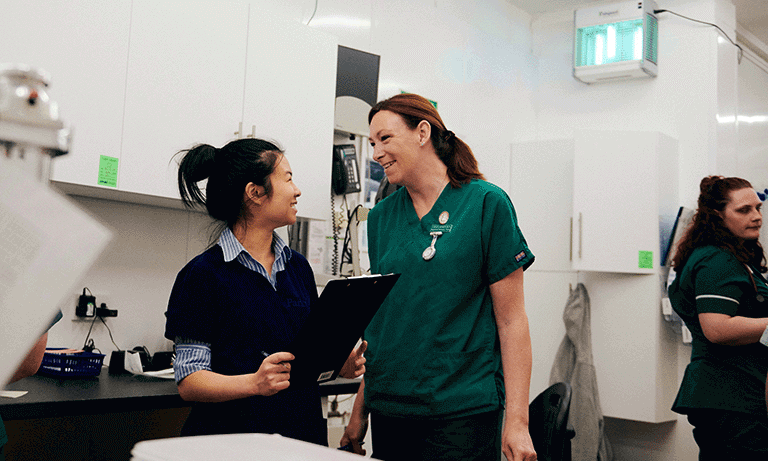Brucella canis: what vets need to know
14 Feb 2024
15 Jun 2023 | Charlotte Pace | Student | Vet Nurses
In this blog, British Veterinary Nursing Association (BVNA) Senior Vice President Charlotte Pace shares the important role veterinary nurses play in welcoming and supporting Extra-mural studies (EMS) placement students.

When EMS students arrive on that first Monday morning, they can be a little intimidated by the bustling business of first opinion practice. The phones keep ringing, animals keep arriving in kennels for the day’s procedures, and vets are looking for nurses to help either hold an animal for blood sampling, clean ears, or to go through cases, all while chatting about what happened at the weekend.
It might seem like everyone knows what they are doing, where they're supposed to be, and that they may not have time for a vet student, but nothing could be further from the truth! EMS students are the future, no shadow of a doubt.
In most practices, it’s usually the nurse who has arranged the placement, a nurse who meets the student at reception, gives the guided tour, and introduces the team.
We nurses know vet students are there to observe the vets, and to develop their practical skills, but it’s the nurses who show students how to ‘be’ in a practice. I believe that nurses teach the ‘soft skills’ which in my mind, are just as important. Personally, I love nothing more than to explain how things in the practice work and why, how we work as a team, and demonstrate how we all look after each other in this pressure filled profession. While on placement, nurses can demonstrate in a non-threatening way how working with nurses and using delegation correctly, can enhance and compliment the vet’s role.
I love having EMS students in practice. It fills my heart to see how their confidence grows and their skills develop. For the time they are with us, EMS students add a different dynamic to the practice, which is refreshing. I love hearing about their experiences, and how they have got to where they are now. It might sound strange, but it keeps me young! They also teach me things, things I have missed, or things I do that I don’t even think about anymore, or about how the world really is for vet students.
I also, of course, love the cakes they leave behind on their last day!
Get tailored news in your inbox and online, plus access to our journals, resources and support services, join the BVA.
Join Us Today